
Inspirations
Explore the elevated life in the mountains. This content debuted in 2015 with Alpine Modern’s printed quarterly magazine project.
The Modern Craftswoman
Crafting small leather goods and wood objects in Boulder, Colorado, Alexa Allen is an artist, a designer, a maker, and a mother
Alexa Allen is an artist, a designer, a maker and a mother. Though not necessarily in that order. It’s more of a constant mash up of all of them, all at once, every minute of the day.

Her story is familiar in the world of design. She started one place, took a few turns, took a few more turns, and today straddles a beautiful line between working for a renowned creative house (i.e., superstar and jeweler to the stars Todd Reed), and launching her latest venture crafting small leather goods and wood objects.

Allen doesn’t turn towards the age-old cliches of “work hard,” “do what you love,” and “follow your dream,” when describing her journey. However, there is no doubt that this woman has put her heart and soul and blood, sweat and tears into creating a thriving business, that right now, after 20 years digging in, is on the cusp of something big.
A conversation with Boulder designer and maker Alexa Allen
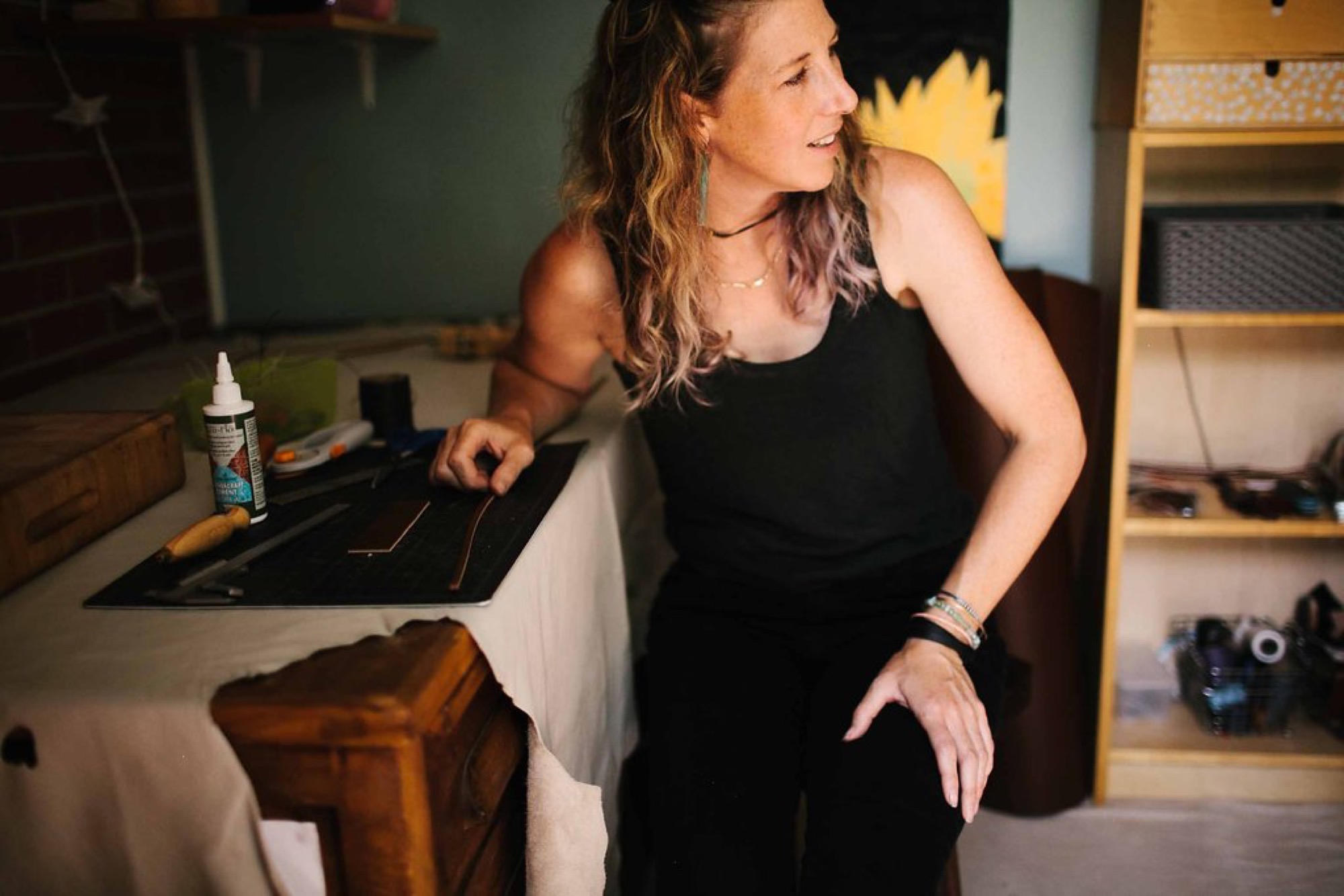
Give us the 15 second version of how you landed where you are today
I’m originally from Boulder, and after living in California for many years, moved back to Colorado in 2010 to start a line of eco-modern children’s furniture. While my love for furniture and woodworking remained, I got the creative itch to branch out and learn another craft. I found a leather class by a very talented local leather artisan, and was hooked immediately. I quickly discovered that the combination of wood and leather goods was a natural fit and this realization has shaped my career path ever since.
"While my love for furniture and woodworking remained, I got the creative itch to branch out and learn another craft... I quickly discovered that the combination of wood and leather goods was a natural fit."
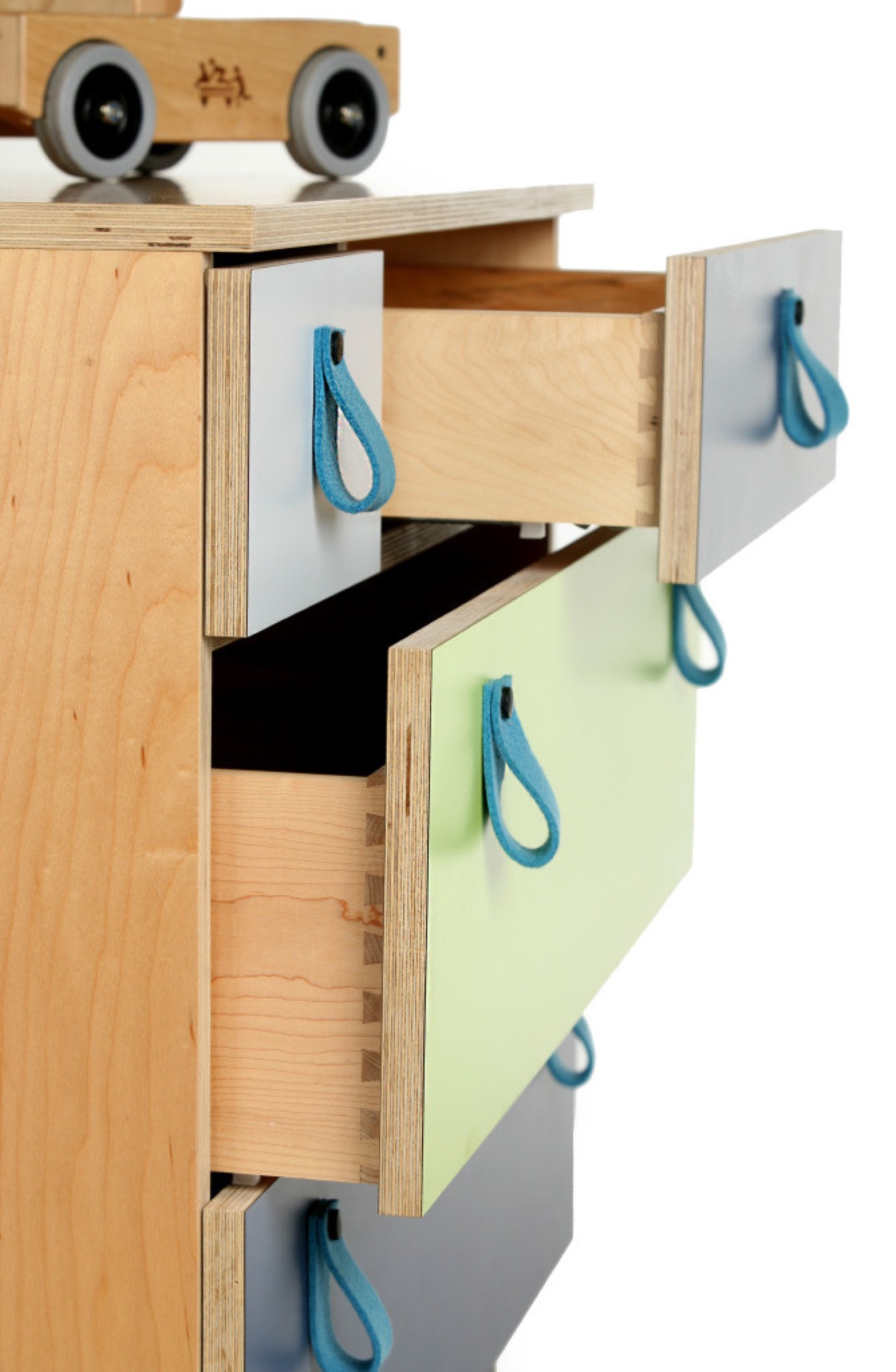
What aspect of your upbringing/childhood affected your decision to go into woodworking?
During my childhood, my father was a contractor so I spent a lot of time on construction sites. My father taught me about the tools of his trade—how to hold them correctly, how to use them, and how to take care of them. I spent endless hours trying to master the art of hammering a nail all the way in with one hit. I never did master that one. However, I’m sure I was one of the only girls in third grade who could wield a hammer, and I took great pride in it. Looking back, my career as a craftswoman makes complete sense though, truth be told, as a girl, I never envisioned that I would earn a living doing so.
"Looking back, my career as a craftswoman makes complete sense."
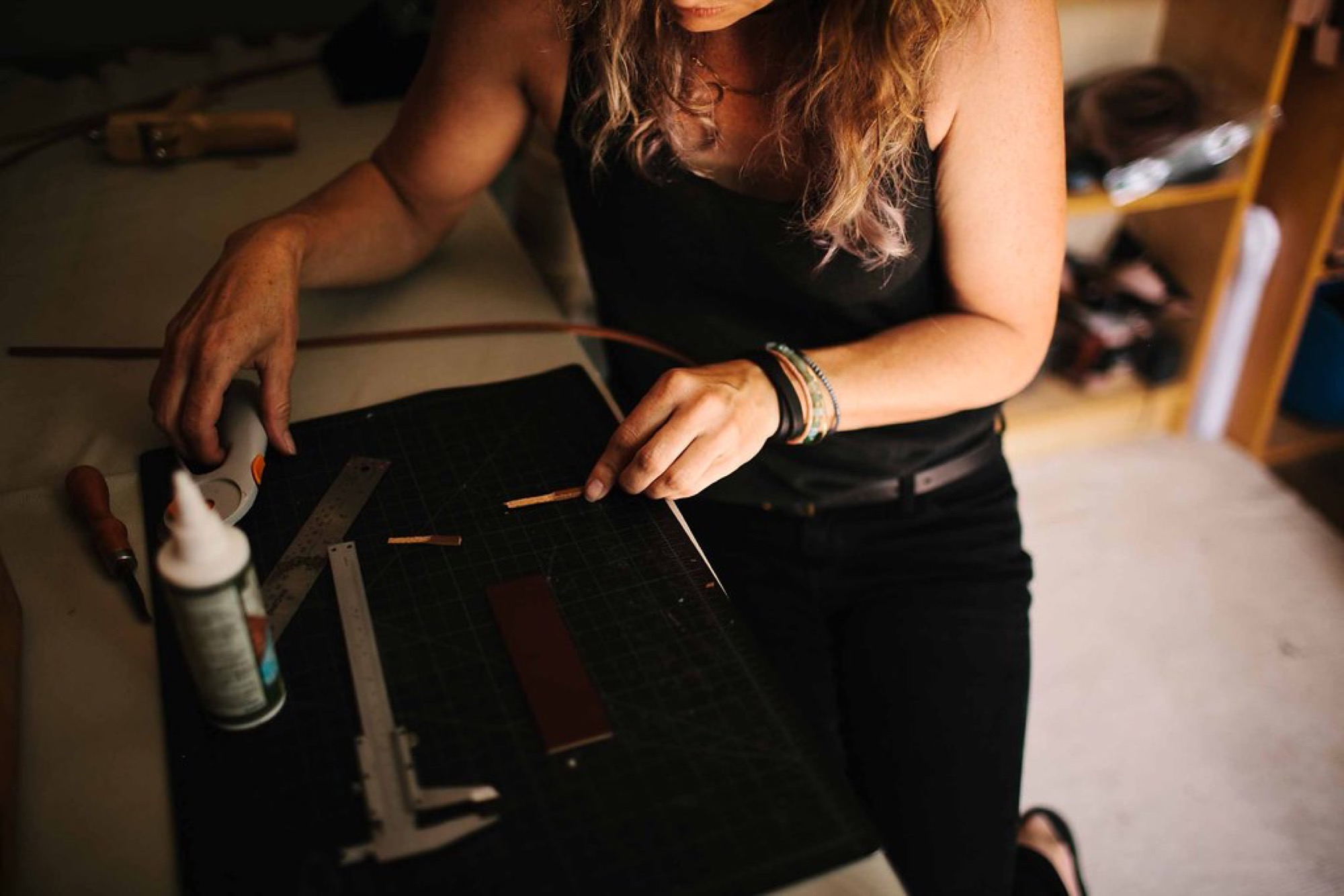
Describe the moment you decided to become a craftswoman
I earned a bachelor of arts degree in art history from Scripps College in Claremont, California. Scripps is an esteemed women’s college, and in addition to providing me with a great foundation in the arts, it also gave me the strength and confidence to succeed as an independent woman.
After my time at Scripps ended, I realized that interpreting and assessing the art of others was not my ultimate purpose in life. I wanted to create art of my own. As I contemplated which direction to take, it soon became clear that I needed to practice an art form that was physical and hands on. Thus, I enrolled in the furniture design department at The California College for the Arts (CCA). For me, the act of making/building/creating must engage both my mind and body—the physical act of making is a crucial component of my art.
"Scripps is an esteemed women’s college... it also gave me the strength and confidence to succeed as an independent woman."
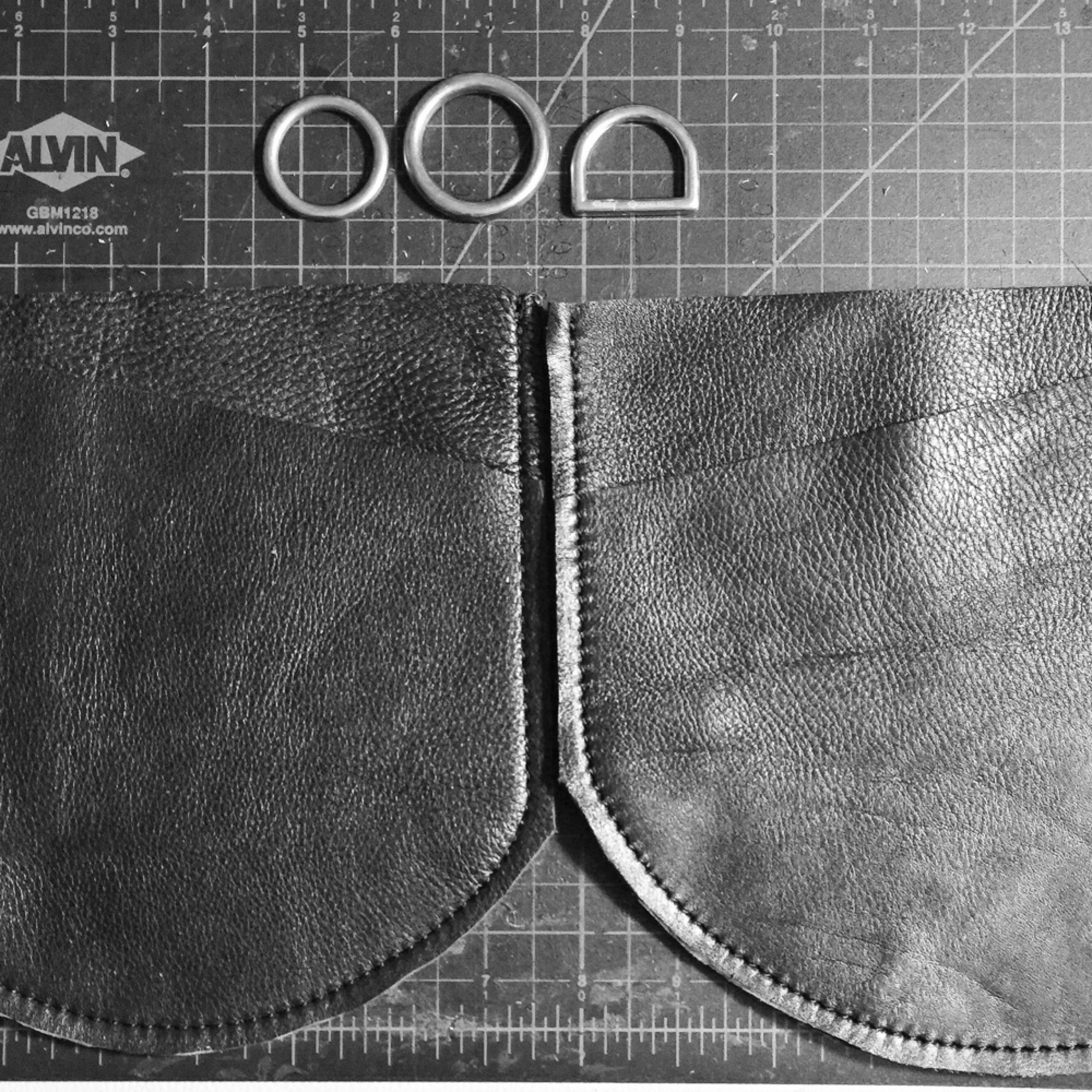
Furniture-making has now evolved into leatherwork and I am excited to see where it takes me next. The more I learn, the more passionate I become and the more my creativity grows. This thirst for new skills is the driving force in my work. By continuing to learn and expand my skills, I can confidently call myself a designer, an artist and a craftswoman.
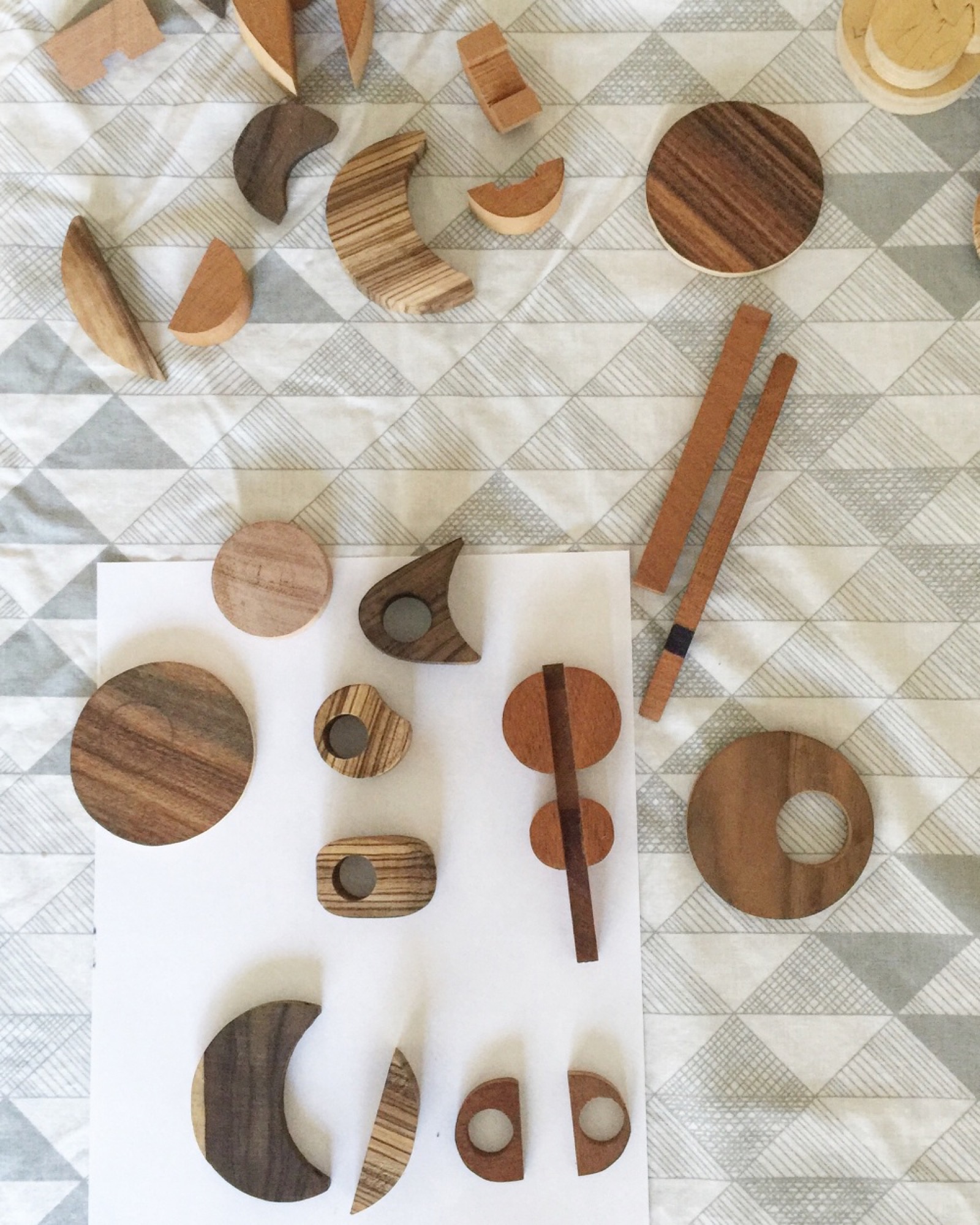
"By continuing to learn and expand my skills, I can confidently call myself a designer, an artist and a craftswoman."
What is the one piece of advice you would give to young women who are just getting started?
I was fresh out of art school at the California College for the Arts when I was hired at a custom cabinet shop in Oakland. The furniture department at CCA had a fairly large number of women in the program and we had an amazing camaraderie. It never occurred to me that this would not be the case in a “real life” scenario.
I was hired at the woodshop in the middle of a high-end Japanese-inspired project, which required a lot of skilled, on-site work. I was called on to route a 12-inch circle that needed to precisely fit a metal fixture, which had just been laid. I was stressed—one small slip of the router or one mistake in sizing, and I would have set the project back by weeks.

I made a jig and practiced in the shop, until it was perfect. The day I walked on site, there were five drywall guys all staring at me. I walked in and set up my router and my jig. By the time I had finished setting up the entire construction crew was watching my every move. I was so nervous! But, I knew what I was doing and I confident in my abilities. Needless to say I executed the task perfectly and from that day on, I was known as “the router queen.”
So my advice to women out there who are just getting started? Know your shit and walk in there like you own the place. △
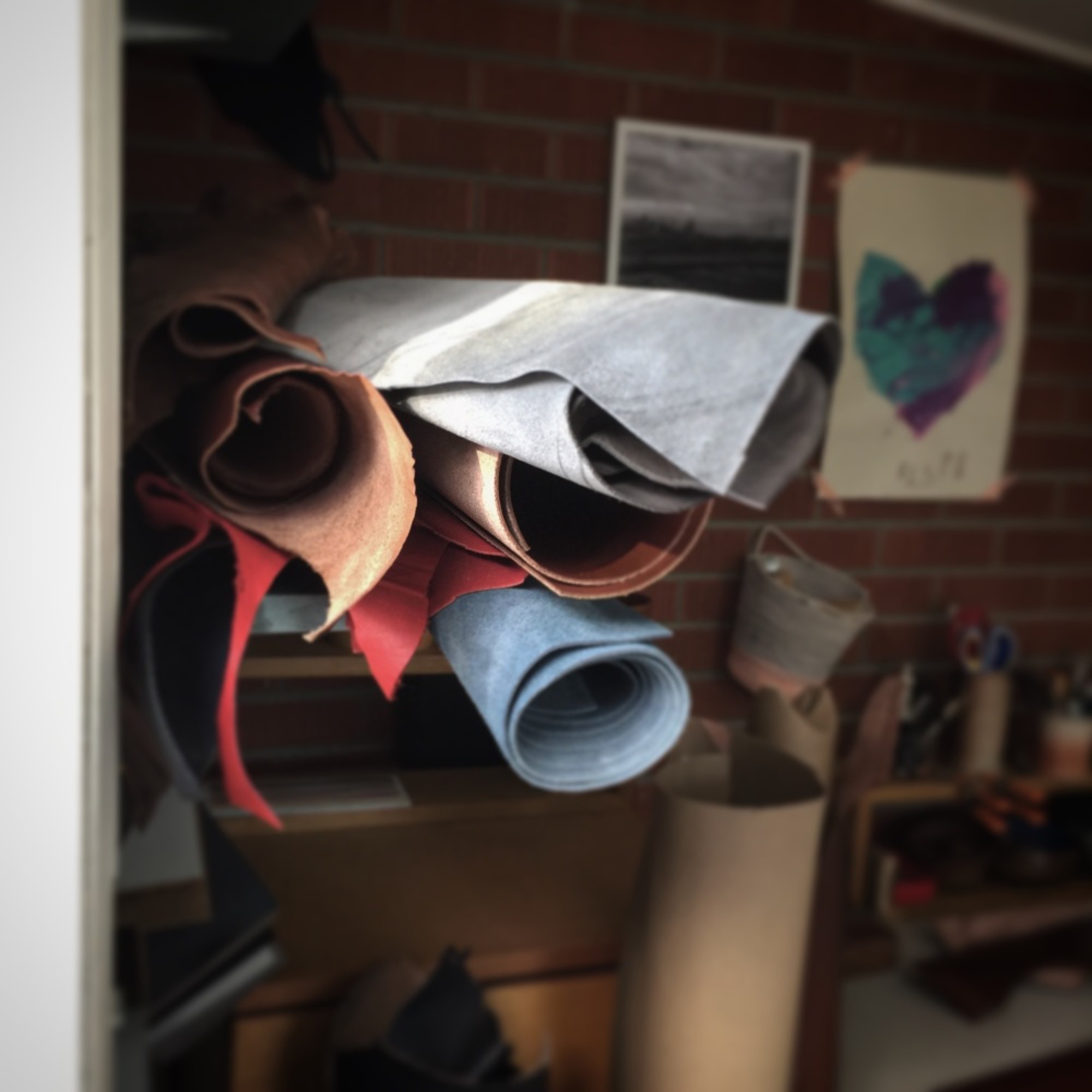
This story was originally published by TARRA: Women Who Create
Breakable Minimalism
Maker in the Catskill Mountains: Ceramics artist Kelli Cain creates earthy, minimalist tableware
As she creates earthy, minimalist tableware, Kelli Cain often muses on the people who will sip from her cups and slurp from her bowls. A visit with the many-talented maker in the Catskill Mountains, New York. What is a cup? Is it simply a container for our morning coffee or afternoon tea? Or is it a vessel for more ethereal brews as well—memories of hot chocolates past, aesthetic preferences, even our imagined ties to the person who shaped the cup and the patch of ground where its clay was dug?

These are questions that potter Kelli Cain ponders often as she sits in a sun-filled corner of her farmhouse in the Catskills, throwing cups and plates, coffee pour-overs, and lemon juicers. Cain is thirty-six and—though her earthy, comfortingly simple tableware belies it—just two-and-a-half years into a career as a commercial potter. Before that, she was (and still is) a video artist, composer, and industrial designer. With her husband, Brian Crabtree, she developed a highly successful line of electronic instruments, which the two manufacture under the name Monome from their eighty-year-old refurbished dairy barn. Pottery is one form of creation among many for Cain, and she probes it with the same intense inquiry she applies to them all.
Utilitarian beauty
“I do believe in utilitarian beauty,” she said on a recent afternoon, leaning her red-brown curls against the bank of windows behind her dining table and fixing her clear gray eyes on me. Beyond her, willows, apple trees, and meadow grass formed layer upon layer of green, ensconcing us in a private, summery world that felt much more than its three hours from New York City. “I think it’s really important that we have a respect for everyday objects, and I think the more energy put into a thing, generally the more we have respect for it.”
“I think it’s really important that we have a respect for everyday objects, and I think the more energy put into a thing, generally the more we have respect for it.”

I had driven up to the farm earlier that day, winding into the mountains on Highway 10 past the little town of Delhi with its peeling Victorians and weekend vacationers, and finally down a gravel drive into a valley where a man with buzzed hair and a long red beard stood knee-deep in garlic stalks, clipping off their spiraled tops (this turned out to be Crabtree). Cain was inside, boiling udon noodles and ladling broth into handmade bowls for our lunch.
“These are such magical little nuggets of flavor,” she announced, spooning a sweet-and-sour pickled shiitake from a Ball jar and slicing it into one of the bowls. She and Crabtree grew the mushrooms themselves in a stack of sugar-maple logs below the house. They also cultivate an apple and pear orchard for cider, grow vegetables, raise chickens, hold concerts, make music and art, and run their ceramics and electronic instrument businesses. On the wall of Crabtree’s workshop hangs a beach-towel-sized print by the Minneapolis-based artist Piotr Szyhalski that exclaims, “We are working all the time!” When I asked Cain if the slogan reflected her life with Crabtree, she replied, “If by work you mean doing things we enjoy, then yes.”

That life of shared creation stretches back almost to the day they met, in their first week of graduate school at the California Institute of the Arts. Cain was studying film and experimental animation, Crabtree, musical composition; they met at the library, where Cain was checking out a book on papier-mâché puppets. Very soon, she said, they became “everything”— friends, co-creators, romantic partners. Their first project together was a mechanical installation involving microsculptures and videos. Years later, a similar joint project led Cain to ceramics.
Finding ceramics
For that project, she and Crabtree wanted to make a group of tiny robots tap on clay sculptures inspired by bee and wasp architecture. Despite Cain’s complete lack of ceramic experience, she decided to make the sculptures herself—which, she noted as we slurped our noodles, “was a hilariously naïve thing to do.” Her three-month crash course in ceramics went forward, however, and it turned out Cain was a natural. An elderly classmate even commented that she should do it for a living. Cain brushed the comment off: She was just starting to build up Monome with Crabtree, and couldn’t imagine a life making cups.
Six years later, she reconsidered. By then she and Crabtree had fallen in love with the Catskills, bought their farm, and started to renovate its dilapidated buildings and plant its fallow fields. Around that time Cain fell seriously ill and was forced to spend an extended period in the hospital.
“When I came out,” she recalled, “I had a little bit of an epiphany that I needed to do something physical, to make things out of physical materials.” Encouraged by the comment from her former classmate, she decided to buy a wheel, kiln, and other equipment to set up a pottery studio.
“I had a little bit of an epiphany that I needed to do something physical, to make things out of physical materials.”

The first project she set for herself was throwing a series of bells. To get the tone right, she had to learn how to create continuous shapes with handles and walls of even thickness. From those she progressed to objects she wanted to use herself: deep, cone-shaped bowls to ladle her beloved udon noodles into, squat coffee pour-overs for her morning brew, glossy bottles to hold the milk from the goats she and Crabtree raised for several years.
The day I visited, her orderly studio was filled with projects at various stages of completion. On a large worktable sat two custom-order bowls (commissions from studio visitors account for the bulk of sales, she said), an assortment of juicers, cups, and bowls to restock inventory, and several prototypes for a line of candleholders. Finished tableware glazed mostly in whites and earth tones lined two large shelves.
Cain mixes her own glazes and combines them in her work with raw surfaces that rub pleasantly against the hand. Often, the farm’s landscape inspires her palettes. Cool whites evoke sky reflected off snow, and browns recall patches of bare earth (snow covers the farm for five months of the year). She told me she had recently tested sixty different shades of white, and had plans to try out more.
“I’m going back to white,” Cain said, taking a small corked vessel into her hands and rotating it to show me the gentle play of textures and tints. “I like minimalism. The variation of one color is such a beautiful thing.”
“I like minimalism. The variation of one color is such a beautiful thing.”
The ghost
Despite her current absorption in utilitarian beauty, Cain sees tableware production primarily as a way to acquire the skills she needs in order to incorporate ceramics more fully into her art. She has already begun to do so. Over the past two years she has created a series of ceramic spheres for use by the Stockholm-based master juggler Jay Gilligan. In performances filmed against the gorgeous frozen landscapes of Iceland and set to music by Cain, Gilligan lets the spheres drop and shatter, toying with the audience’s nervous hope that he will preserve the fragile objects. “My whole point was to inadvertently be in the room with him and almost choreograph his movement, because fear is now an element,” Cain said.
In a way, the concept echoes her fascination with ceramics as a secret bridge between herself and the people who use her cups and bowls in their daily lives. When I mentioned the parallel, she laughed. “Maybe it’s my obsession with being the invisible force in the room. I really think I might have a problem with needing to be the ghost,” she said. She was half joking, but as I said goodbye and drove away into the hills, I wondered: Perhaps the ghost was precisely what gave her objects their quiet, distinct beauty. △
